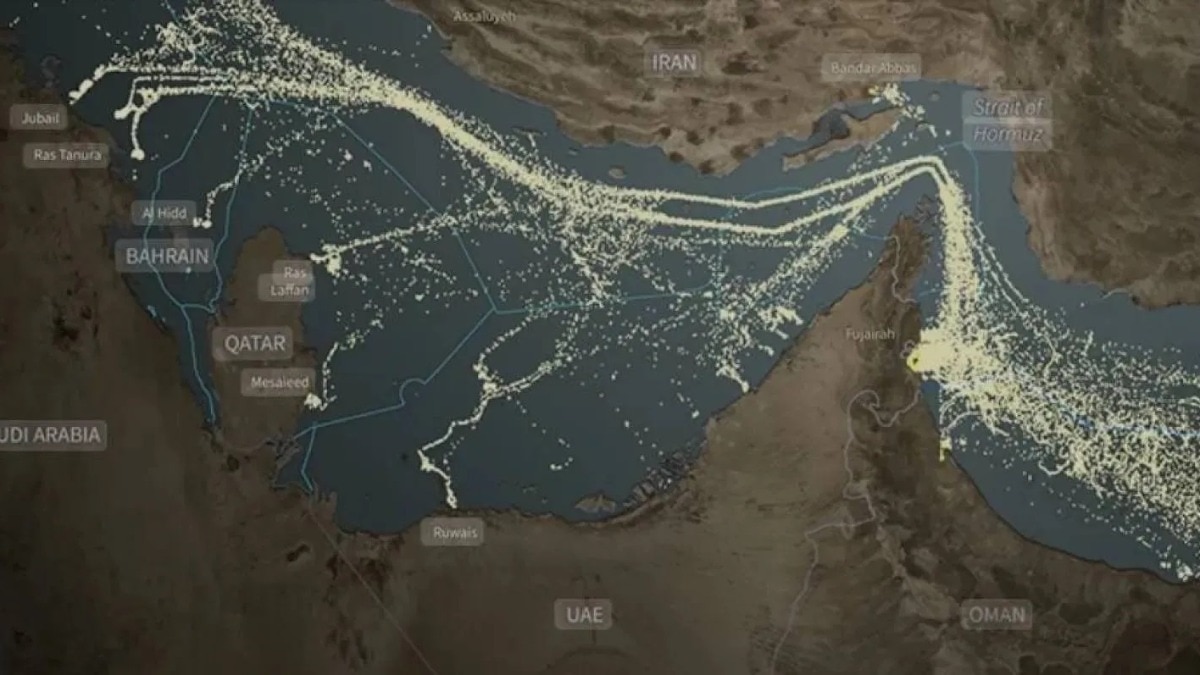Physical Address
304 North Cardinal St.
Dorchester Center, MA 02124
Physical Address
304 North Cardinal St.
Dorchester Center, MA 02124

Iran’s Parliament has voted to close the strait in retaliation for U.S. strikes on its nuclear sites. But while the symbolic move has triggered global anxiety, India’s response has been measured. Years of strategic diversification, logistical foresight, and contingency planning have substantially reduced India’s dependence on this volatile corridor.
Why the Strait of Hormuz is critical for India
About 2 million barrels per day—roughly 36% of India’s total daily crude imports—pass through the Strait of Hormuz, connecting India with major oil-exporting countries like Iraq, Saudi Arabia, UAE, and Kuwait.
The strait handles approximately 20% of global oil shipments and a large share of global liquefied natural gas (LNG) trade, making it a vital link in India’s energy security chain.
Can Iran close the strait?
On June 22, Iran’s Majlis (Parliament) voted to close the Strait of Hormuz, citing attacks by the U.S. on Iranian nuclear facilities.
Esmaeil Kowsari, a member of the Majlis, confirmed the vote and its intent as a retaliatory measure.
However, the decision to implement the closure ultimately rests with the Supreme National Security Council and Supreme Leader Ayatollah Khamenei.
Iran does have the military capability to enforce a closure using naval mines, missiles, and fast attack boats, but such action would mark a major escalation and risk retaliation.
Despite repeated threats, Iran has never actually closed the strait, in part because most of its own oil exports rely on the same route.
So, how worried should India be?
Blocking the strait would disrupt nearly 20% of the world’s oil supply, causing a sharp spike in global oil prices and widespread economic instability.
India could face temporary disruptions in crude oil supplies from Iraq, Saudi Arabia, and the UAE, leading to price surges and logistical challenges.
India’s main LNG supplier, Qatar, does not use the Strait of Hormuz for shipments to India—making gas supplies relatively secure in the short term.
How is India playing the risk?
India increased its oil supplier base from 27 countries in 2006–07 to 39 by 2021–22.
Russian oil now accounts for over 40% of India’s total crude imports—up from less than 1% before 2022.
Other key sources include the US, Brazil, West Africa, and Latin America, whose shipments do not pass through the Strait of Hormuz.
Russian oil reaches India via the Suez Canal, Cape of Good Hope, or the Pacific Ocean. Oil from the US, Brazil, and West Africa also travels along routes that bypass Hormuz entirely.
India maintains reserves covering 9–10 days of crude imports. Oil marketing companies hold several weeks’ worth of commercial reserves, providing additional cushion.
The UAE-India Comprehensive Economic Partnership Agreement (CEPA) and rupee-dirham settlement mechanism allow India to pay for UAE oil in rupees, easing trade even in a dollar-restricted scenario.
These frameworks ensure continued access to UAE oil, regardless of disruptions in Hormuz.
Closer home, this is what it’s been doing
India is stepping up domestic oil and gas exploration to reduce import dependence. Ethanol blending is being expanded (target: 20% by 2025), alongside investments in CNG, green hydrogen, and electric vehicles.
In the event of a full blockade, India is prepared to halt petroleum product exports, boost domestic production, and ramp up imports from non-Hormuz routes.
Oil marketing companies are ready to shift supply lines and source energy from multiple backup channels.
What commodities does India import via the strait?
Crude
Roughly 40% of India’s crude oil imports come through the Strait of Hormuz.
This oil is refined into petrol, diesel, and other fuels critical for transportation, power, and industry.
LNG
Over 50% of India’s LNG imports—mainly from Qatar—are shipped through the region.
LNG is used for electricity, fertilizers, and domestic fuel.
Other goods
The strait is also a key conduit for chemicals, metals, fertilizers, and some food products imported from the Gulf.
Why it matters?
India imports about 90% of its crude oil and half of its natural gas. Any sustained disruption would immediately affect energy affordability and availability.
Nearly $1.2 trillion in maritime trade passes through the Gulf each year. A closure could raise costs or delay shipments of essential goods, affecting industries, agriculture, and manufacturing.
What is the Centre saying?
Petroleum Minister Hardeep Singh Puri has stated that India is “well-positioned” to manage any disruption. “A large volume of our supplies do not come through the Strait of Hormuz now. Our oil marketing companies have supplies of several weeks and continue to receive energy from several routes,” Puri said.
If oil prices spike above $105/barrel, the government is prepared to adjust excise duties and implement other economic measures.